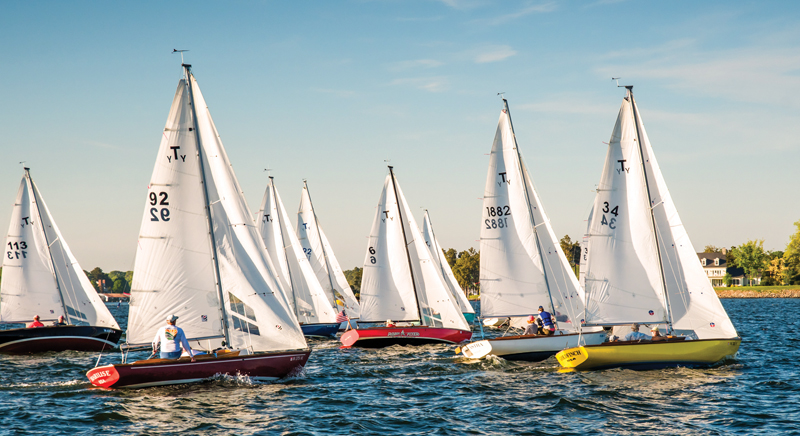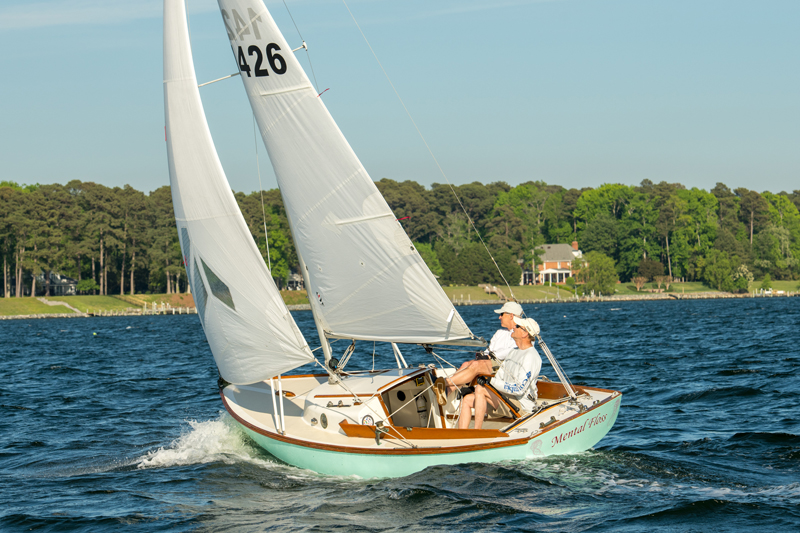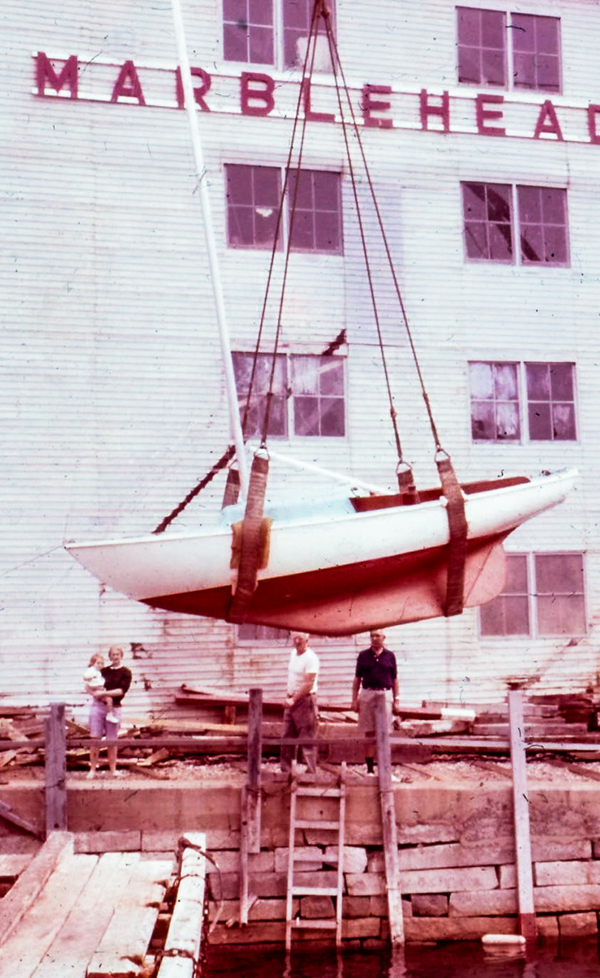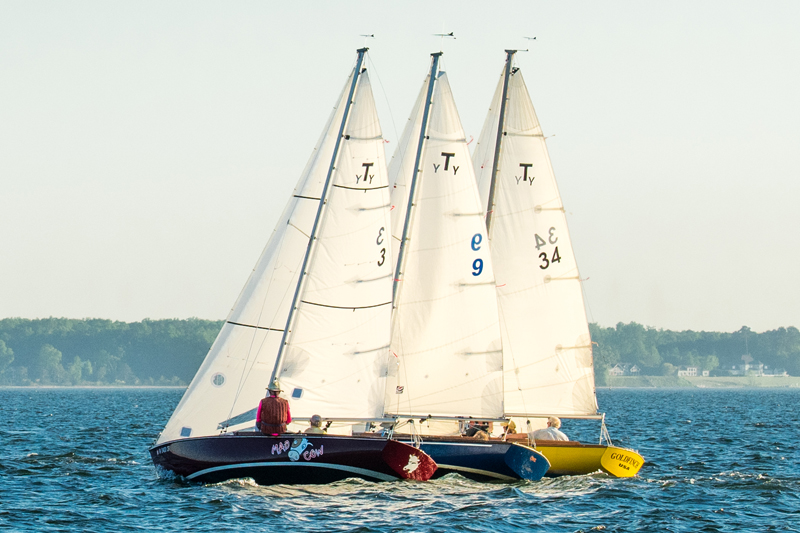My gait softened the first time I walked up to a Typhoon. Dumbstruck, I savored the unforced elegance of her shape, sculpted teak, and hardware fit for sailors of all ages. She awes me still as a spectacular 19-foot version of a classic full-keel sailboat.

Looking to create an affordable yet sturdy performer, this New England charmer was originally built by Henry Audet, owner of fledgling Naugus Fiberglass. Famed naval architect Carl Alberg designed Audet’s “Typhoon,” and together they launched hull number one from Graves Upper Yard in Marblehead, MA, mid-summer, 1962. As Alberg and Audet set sail that day, their families began a lasting friendship and a boat whose iconic design has endured.
The Typhoon proved to be a performer over a wide range of wind and sea conditions. More than 2100 Typhoons were built through 1986. Ninety-three percent of them were Weekenders with a cabin capable of sleeping a family of four—maybe not at today’s comfort standards! Finding one in Bristol condition can excite passion enough to inspire an investment of 10 or even 20 times its original selling price of $2000 for an expertly crafted re-do.

Naugus Fiberglass built the first 50 or so Typhoons. As the cuddy-cabin design caught on, Audet built a cabinless daysailer with mahogany coaming carried forward to the mast. Years on, the company launched a larger boat that, sadly, was overdesigned for the market. Naugus was forced to put the Typhoon molds up for sale as the business closed. Cape Dory Yachts, whose first boat, the 1963 28-foot Cape Dory 10, also an Alberg design, got the molds. All remaining hulls were completed there.

Today, Marblehead is just one of several home ports for these handsome classics, but perhaps the most vibrant Ty community hails from the Rappahannock River Yacht Club (RRYC) in the Southern Chesapeake Bay. Along with hosting the biennial Ty Nationals, the club’s spring and fall racing series of six evenings (three races each) brings a fleet of 10 to 14 boats ready to do business. For me, over four years and 140-odd races, it was as much fun as one can have at five knots.

My partner Art Gilbert and I readied our Typhoon over a year of deck repairs, adding a traveler and compression post, polishing the bottom, and deftly applying creative graphics. She was cool. At our first race, I quickly learned that skippers and crew aboard the other boats were not only experienced, but some were literally world class. Over our racing career, we took second twice, even with several first over-the line starts. It was class-racing in a classic; we had a blast but were definitely humbled.
Perennial winners Ron Mihills and son Brent had a Ty daysailer. He coached Art and me: “Understand exactly how each slight sail adjustment impacts your boat speed,” he said, “especially when racing, you will constantly be tweaking something.”
As the majority of the boat’s speed comes from the main, he challenged us to especially monitor it with each turn or wind change throughout a race. Sheet, halyard, outhaul, cunningham, vang, and traveler. Dang, we were busy. We led one race from the start and to within 1/2 mile of the finish, only to see Ron and Brent slip right past us. Dang, indeed.
by Lou Frank
About the author: Lou Frank grew up sailing and racing in the Annapolis area, then lived aboard and raced in San Diego while developing media businesses. Returning to the Virginia waters of the Bay, he and his family have enjoyed membership in the Sailing Club of the Chesapeake since the 1970s; he is also rear commodore of Indian Creek Yacht Club. He writes along with doing still and drone photography assignments. He can be reached at [email protected].




